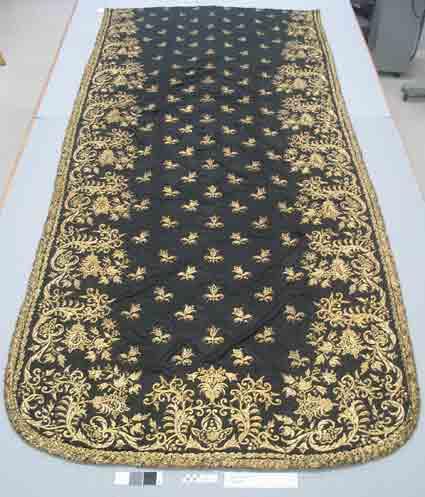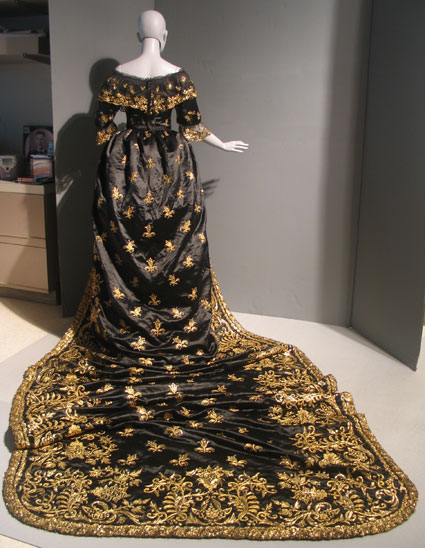Often when we think of fashionable dress, especially historical costumes, we think of the people who wore the clothes rather than those who fabricated them. This can be especially difficult when a costume has passed through many hands, and been worn by many people, over the centuries. As LACMA prepares to exhibit its recently acquired collection of eighteenth- and nineteenth–century European costumes and accessories next fall, its textile conservators have been working arduously to unravel the past. After careful examination and research by conservators, a black satin court dress with gold embroidery—purportedly worn by Queen Maria II of Portugal in 1850—was found to have been altered, cut, and reused sometime after its royal ownership. The task at hand for the conservators was to determine how the court dress was originally worn. The three-piece gown, consisting of a bodice, skirt and train, arrived at the museum with an additional bodice and a collar. These two extra pieces, dating from the 1890s, presumably were used for a fancy-dress ball by a new owner.
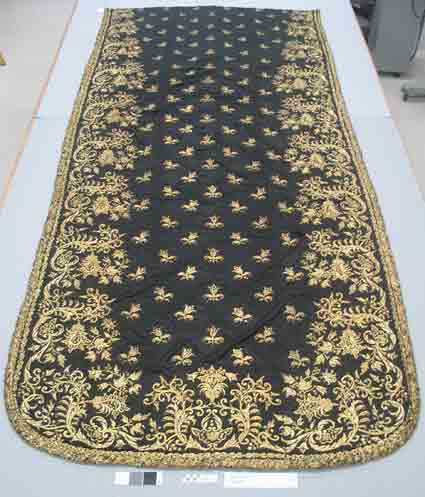
The twelve-foot-long train as acquired
The main problem posed to conservators was the court train. The top of the train was crudely cut off to provide fabric for the second bodice and collar. In its present state, the top edge gave no clue as to how the train originally had been pleated.
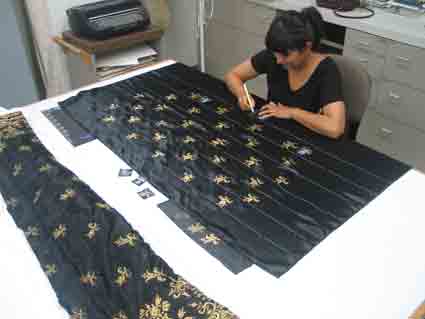
Making mock-ups of the train minimized handling of the original
Several mock-ups of the train were created so that we could determine, without handling the original train, the best presentation of embroidery, volume, and position in relation to the petticoat. The goal was to create the silhouette of the 1850s, to show the embroidery to its best advantage, and to gather the fabric in a way that minimized its bulk. At first, the top edge was gathered using a narrowly spaced inverted box pleat. Later, historical research was found to support a widely spaced box pleat.
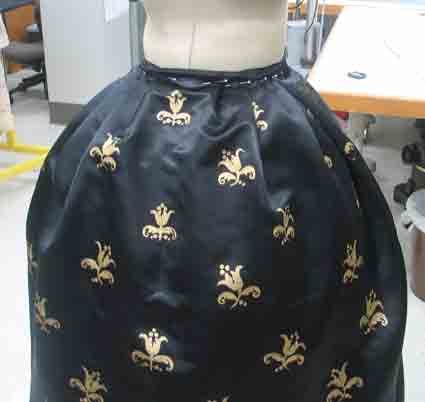
Two arrangements that were ultimately rejected
After meetings with curators with the various mock-ups, a final box pleating arrangement and position over the petticoat were chosen.
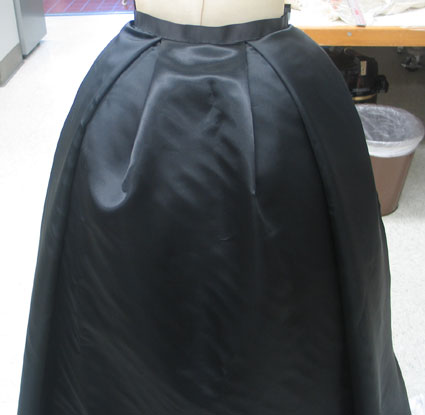
This pleating arrangement on an unpainted mock-up was the final choice
Now conservation work on the actual train began. To even out the top edge of the train and to avoid damaging the original fabric, a narrow strip of modern fabric was added to the top edge. It would be this modern fabric that would receive the pleats and stitching to a modern waistband. A new black satin silk, matching in weight and tone of the original train, was hand sewn to the top; the gentleman who had sold the material to us was quick to mention that the same type of fabric had been used for a cape in one of the Batman films, making the piece a bit more heroic and unique.
History has been mended. The Queen Maria train will be featured in the upcoming costume exhibition at LACMA in the fall of 2010.



